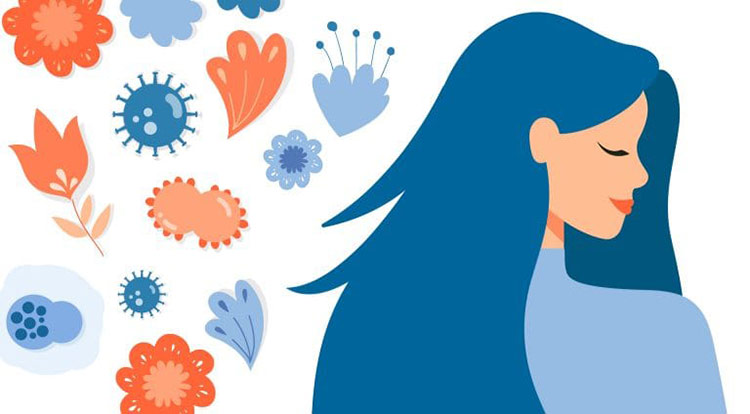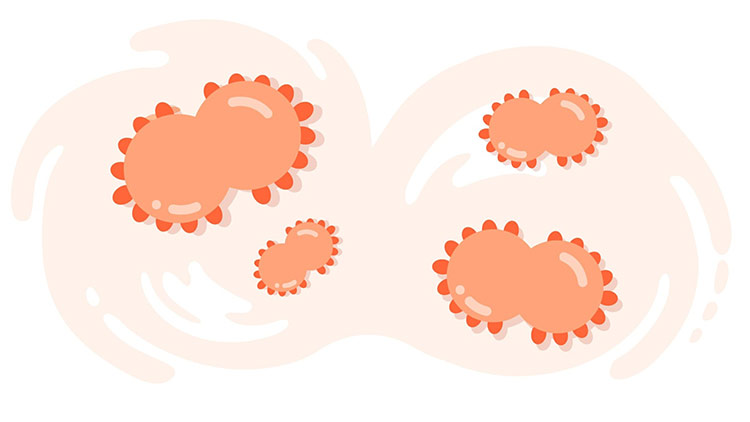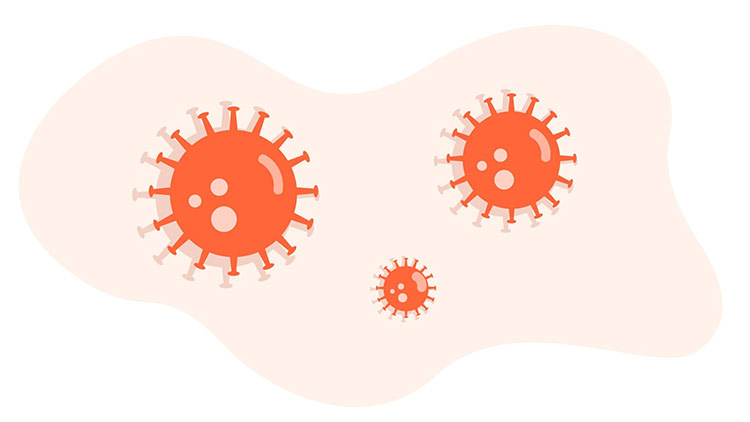While neither sex is immune to sexually transmitted diseases (STDs), there is a marked difference in the impact that STDs have on men and women: In addition to being more likely to suffer long-term health complications, women are more likely to suffer from infertility. Women who are able to conceive may transmit the STD to her baby during pregnancy or childbirth, highlighting the serious impact that an STD can have on females.
What are the most common STDs affecting females?
The path to STD prevention begins with awareness of some common STDs affecting women and how they are transmitted. In particular, it is helpful to know the symptoms that typically accompany each disease and steps that can be taken to prevent their occurrence. Below is an STD list for females that highlights the most prevalent STDs impacting women.
Chlamydia
There were 1.8 million cases of chlamydia reported to the Centers for Disease Control and Prevention (CDC) in 2018, making it the most frequently reported STD, and the rate of chlamydia in women is twice the rate seen in men. Women under the age of 25 account for nearly half of all cases, highlighting the prevalence of the disease among high school and college-age females.
Key symptoms include painful or frequent urination, abnormal vaginal discharge, painful intercourse and bleeding between menstrual cycles, but the majority of women with chlamydia have no symptoms. Untreated chlamydia may cause Pelvic Inflammatory Disease (PID), which can lead to infertility. Fortunately, chlamydia can be cured with the proper medication.
Gonorrhea
“Gonorrhea diagnoses among women have increased for several consecutive years – from 232,587 cases in 2017 to 241,074 cases in 2018.” – Centers for Disease Control and Prevention (CDC)
Gonorrhea ranks near the top of the STD list for females, and the rate of infection is highest for women under age 25.
Symptoms are much like those associated with chlamydia and include increased vaginal discharge, painful intercourse, pain during urination and bleeding between periods. Like chlamydia, gonorrhea most often causes no symptoms and may lead to PID and infertility. Antibiotics can cure gonorrhea. However, drug resistance has become a problem, making it especially important that antibiotics are taken as directed.
 Syphilis
Syphilis
Syphilis is of increasing concern because it is becoming more common: Cases among women of child-bearing age have increased 36 percent between 2017 and 2018. Untreated syphilis can cause severe organ damage and can be passed on from mother to child during pregnancy. For these reasons, it is critical for women to be tested and treated as soon as possible.
The disease can be spread during vaginal, anal or oral sex. The first symptom of syphilis is usually development of one or more sores on the genitals or even mouth. As the sores heal, people may then develop a rash and flu-like symptoms. While syphilis can be cured if caught early enough, it can cause permanent damage to the brain and heart if treatment is delayed.
Herpes
“Genital herpes symptoms can come and go, but the virus stays inside your body even after all signs of the infection have gone away. The virus becomes “active” from time to time, leading to an outbreak. Some people have outbreaks only once or twice. Other people may have four or five outbreaks within a year.” – Office on Women’s Health
Women who contract herpes often do not realize they have the disease. Some people develop flu-like symptoms when they are first infected. When herpes sores do develop, they look like blisters at first, then become painful. They can appear on the genitals or in or around the mouth. There is no cure for herpes, but medications can help people reduce the number and severity of outbreaks.
Trichomoniasis
Bearing the nickname “Trich,” trichomoniasis is caused by a single-celled parasite called Trichomonas vaginalis. Hallmark symptoms include foul-smelling vaginal discharge that presents in a variety of colors such as yellow, white, or green. Women may also notice redness on or around the vagina. They may also notice pain with sex or urination. Antibiotics easily treat trichomoniasis.
What should you do if you are a female who may have an STD?
As discussed above, an STD can produce serious and irreversible consequences to a woman if left untreated. The only way to confirm whether or not you have an STD is to be tested and diagnosed by a trained medical professional.
If you are worried that you may have an STD, the single best step you can take is to visit a trusted lab near your home for stress-free STD testing. The sexual health professionals with Priority STD Testing are available to discuss your concerns and provide a safe, private testing experience for you. You can get started on the path to sexual health by following these simple steps with Priority STD Testing:
Step One: Locate a testing center near your home
You can find a testing center near your home quickly and easily. Simply enter your zip code and a list of testing centers near your home will appear. With 4,000 centers across the nation, you can choose from an extensive array of FDA-approved testing facilities within close proximity to your home.
Step Two: Select the tests you would like to have performed
At Priority STD Testing, we realize that no two women are exactly alike in terms of their sexual behavior and partners. We offer a wide array of STD tests in addition to our comprehensive 10-panel STD test, which tests for all of the STDs discussed above plus others. Or, you may find that our Chlamydia and Gonorrhea Panel best meets your needs. If you would like an explanation of available testing options, we are happy to provide guidance.
Step Three: Place your order online
The STD testing process may seem complicated, but our online platform is easy to understand and navigate. Once you select your testing center and your desired tests, you can place your order online. You can choose from a variety of convenient payment options, including all major credit cards, debit cards and prepaid gift cards. You can also use your Health Savings Account or Flex Spending Account to cover payment.
Step Four: Complete the testing process
The Priority STD Testing team offers testing solutions to accommodate your busy schedule and create peace of mind. Whether you are looking for a lab that offers Saturday STD testing to avoid interfering with your work schedule or same-day STD testing so you can receive your results as soon as possible, Priority STD Testing is here to help you. We even offer treatment guidance if you receive a positive test result.
The Bottom Line
Women who contract an STD are at risk for life-altering consequences. However, with prompt diagnosis and treatment, symptoms can be eliminated and some STDs are even curable. With options such as same-day testing available, you can be on your way to a fast diagnosis and treatment. We encourage you to visit one of our 4,000 facilities across the United States to discover why we are America’s most trusted STD testing provider. We look forward to helping you improve your sexual health!





